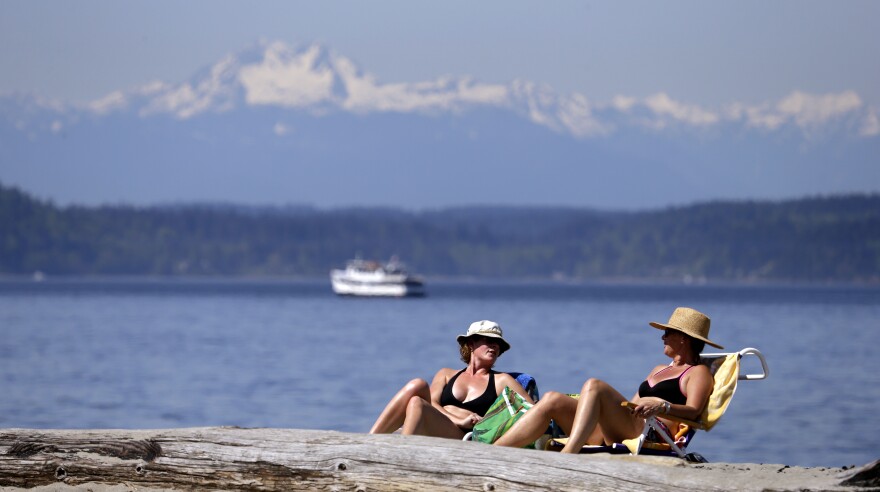An excessive heat warning has been in effect since Thursday this of week and temperatures are expected to hit the 90s in places around the Puget Sound region through Saturday.
It will be sunny and hot all weekend long. And the heat wave comes as no real surprise; This is typical weather around here for August, when we expect our hottest temperatures of the year.
But why now? Shouldn’t it be in June, when the sun is strongest?
KPLU weather expert Cliff Mass agrees that it’s an interesting question. He says it's counterintuitive that the hottest summer days in the Northwest generally come more than a month after the solstice, when the sun is highest in the sky.
Sun’s Warming Effect Takes Time
“The strongest sun is clearly around June 21st, near the solstice,” Mass said. “The intensity is the strongest, so you might expect the warmest days to be when the sun’s the strongest. But it’s not.”
The warmest days here in the Northwest -- and in fact in many places – are actually in early August.
“The reason is interesting,” says Mass, who teaches atmospheric sciences at the University of Washington. It turns out that it takes a certain amount of time for the earth and the ocean to warm up.
“You can think of the oceans and the earth as sort of like a big flywheel. And so even though they’re heating, it takes a while for the heat to percolate into the soil. It takes a while for ocean to warm up. And so you don’t get the warmest days when the amount of heating is the most,” Mass said.
An Equation That Peaks In August
He says what really forces the warming is when you have more coming in than going out.
“What’s coming in is solar radiation from the sun. That’s our heat source. But the earth is also losing heat. It’s emitting infrared energy to space. And as long as what’s coming in from the sun is greater than what’s going out, the earth is warming up,” he said.
In earlier summer, we’re in a warm-up phase that intensifies gradually, Mass says.
“And the whole thing peaks in early August. After that, the sun is weakening substantially. And what’s coming in actually becomes less than what’s going out. And so we start cooling off.”
Same Dynamics In 24-Hour Cycle
Interestingly, Mass says the same forces play out every day.
The greatest sun strength is around solar noon, which is about 12 o’clock during the winter and about one o’clock during the summer. But the maximum temperatures come several hours later.
“During the summer, right now,” Mass says “it is not unusual for us to have our maximum temperature around five o’clock – that’s four hours later.”
He says during the winter, it comes in a little bit closer, with the maximum radiation from the sun at around noon and maximum temperatures generally coming in around 2 or 2:30 pm.
“So whether it’s the seasonal variation or the daily variation, the greatest temperatures tend to be later than the maximum solar radiation coming in from the sun,” Mass said. “And it’s for the same reason: it takes a while for the warmth to have its way.”
The weekly KPLU feature ‘Weather with Cliff Mass’ airs every Friday at 9 a.m. immediately following ‘BirdNote’, and twice on Friday afternoons during ‘All Things Considered’. The feature is hosted by KPLU Environment Reporter Bellamy Pailthorp. Cliff Mass is a University of Washington professor of atmospheric sciences, a renowned Seattle weather prognosticator, and a popular weather blogger. You can also subscribe to a podcast of ‘Weather with Cliff Mass’ shows.




